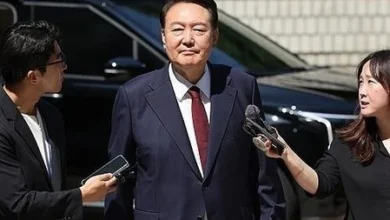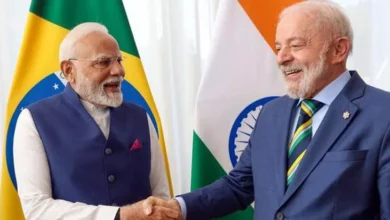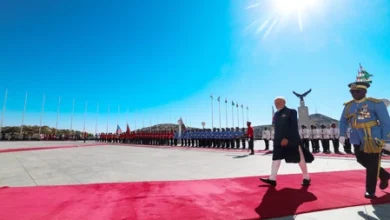The Trump-Zelenskyy debacle was really about the China supremacy

What is one to write about hours after the US president literally scolds Ukraine’s President for gambling with World War III?
In November 2024 – which is to say, only three months ago – it was reported that the Biden administration had ‘allowed’ Ukraine to use American-made missiles to attack deep inside Russia to escalate the war.
After this, Reuters ran a report with the headline ‘Biden risking World War 3 with missile decision, says Russian lawmaker’ (the headline was later revised).
The month before that, October 2024, the head of the United States’ largest bank was quoted in a headline which read ‘Western power is at risk and there could be a World War 3, says JP Morgan CEO Jamie Dimon‘. He was referring not only to the war in Ukraine but also the genocide in Gaza and the rise of China as being trigger events for something wider.
So the circus that unfolded at the famous Oval Office in the White House on Friday, 28 February, was not the only time that we have been discussing the potential obliteration of humankind.
What is one to make of all this? To begin with, what does Donald Trump want?
On the surface, it is hard to tell, because he talks so much and so casually about so many things. His detractors say this is because he is stupid and mercurial – but it is difficult to square this profile with a person who won the US presidency twice.
Let us therefore assume that Trump knows what he is doing.
The view that appears to be the most coherent is that the real target of the American president is China. He wants to handicap its rise so that it does not equal the US in power. He wants the dollar to remain the only reserve global currency and he wants China to cede some ground on manufacturing and exports back to the US.
And so all of his larger actions should be seen, according to this view, through the anti-China lens.
China is scheduled to equal and then exceed the US economy over the next couple of decades, if past growth rates hold. Trump does not want to allow that. His own first-term tariffs and other restrictions on China that were added under Biden – such as the ban on high-end computer chips, with the naked desire that China not progress technologically – are the largest part of that plan.
In this term, Trump has added a 10 per cent additional tariff on all Chinese goods coming into the US and then another 10 per cent that is scheduled to come into effect in the week of 2 March. He has said he could go as high as 60 per cent. This will introduce high levels of uncertainty and turbulence in China and also the US because many industries are intertwined.
Several people have pointed out directly to Trump that this will affect American consumers as much as it will the Chinese companies, but he has repeatedly waved off this concern.His open threat to BRICS against using currencies other than the dollar is another part of the plan to keep China under control.
Going by this logic, the US involvement in Ukraine and in West Asia are distractions. The wars there have to end quickly, so that the main business of China can be focused upon. China is America’s only peer competitor – not Russia, not anybody else. Therefore, it makes little sense to be diverted from the overall mission.
The two years of continuous and murderous bombing of Gaza ended with a peace deal that Trump forced on Israel in January, and now it seems like Ukraine will have to capitulate to Russia as US backing ends. Once that happens – meaning, after Russia has prevailed over Ukraine – there will be sharper US focus on China.
But if this is the case, why is Trump also going after America’s largest trading partners and allies and also after Mexico and Canada?
Assuming we have Trump’s perspective to rights, I suggest that all of this is a continuation of his desire to keep America ahead of China. The tariffs have introduced a level of chaos and uncertainty in the global markets – and that always leads to a strengthening of the dollar, as we are witnessing.
The only counter here is that a stronger dollar makes it even harder for the US to export its own manufactures and so the trade deficits that Trump wants to reduce remain in place. Perhaps Trump has thought about this also, and perhaps he has not. We shall see: Four years is a long time.
The bigger question mark is on how China will react.
China has not reached the position it has today because it has been the beneficiary of external largesse. It has a large and talented population that has moved its economy and industry up the value chain faster than any nation in history over a period of just 40 years. It will defend its position and it will do what it can to first equal and then overtake the US.
China’s ambitions cannot be determined by America. China’s leader cannot be summoned to the White House king’s court and scolded and forced to bend the knee as US allies have been made to do.
And as recent developments in artificial intelligence and the growth of Chinese exports to the rest of the world in 2024 show (China has a trillion-dollar trade surplus), the tariffs by themselves may slow but will not stop China.
Essentially, if Trump’s primary quest is to ensure America retains its global dominance, the ending of the Ukraine war will clear his Oval office desk to focus on the task at hand. But what comes next – whether World War III or something else – absolutely nobody knows.









